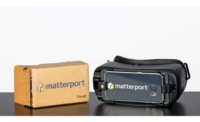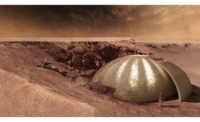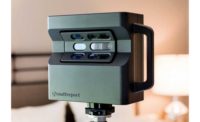Getting 3D-printing technology to work for construction has been a struggle for decades. But Platt Boyd and his team at Branch Technology are taking a different approach to free-form fabrication that is showing promising results.
Boyd founded the 3D-printing company in 2014 with a small team and a single programmable robotic arm. Rather than print out shapes layer by layer from a gantry-mounted nozzle, Branch’s robot prints skeletal frameworks of shapes based on Branch’s design software’s algorithms. This approach not only saves on material, but allows for Branch to print out unusual 3D shapes that can maintain structural strength.
 Platt Boyd
Platt Boyd
Chattanooga, Tenn.
ENR 9/4/17 p. 26
Founded additive manufacturing firm that is pioneering techniques for designing and fabricating structurally sound 3D-printed objects.
Initial projects for art exhibits have given way to work with major design and engineering firms, demonstrating how the company’s 3D-printing methods can be brought into general construction. At the 2017 finals of NASA’s Centennial Challenge to 3D-print structures out of material similar to what is found on the surface of Mars, Branch and design firm Foster + Partners were able to adapt the company’s robot to print a polymer-like material using the simulated Martian soil. Engineers brought in to oversee testing of contestants’ entries to ASTM standards were particularly impressed with Branch’s work. The team took home first place.
While the Mars challenge is a bit of good press, Branch Technology is seeing more interest back on Earth. Foster + Partners is one of several design firms intrigued by the free-form shapes that Branch’s robot can produce, and recent experiments in mixing materials are showing promise. The performance of Branch’s 3D-printed objects under stress tests, particularly when their skeletal frameworks are filled with a shotcrete core, already is exceeding traditional methods for fabricating unusual structural shapes.
“If you talk to Branch about the way they develop their plans, its with this open-ended design as the goal,” says Marc Guberman, a partner at Foster + Partners who worked with Boyd on the NASA challenge. “So much 3D printing is done in a box with a gantry, but Branch is creating this large-scale manufacturing space where robots can dance within.”
Boyd notes that “3D printing really opens up all sorts of design freedom. What we’re espousing is an unprecedented design freedom and resource stewardship in the construction arena,” he adds. “If you can build lighter, faster, stronger on site with an order of magnitude more of design freedom, as an architect, I would be lining up for days to be building with that method.”
Branch continues to innovate on its platform, with plans to start work on its first 3D-printed house this year. It also has secured a job to fabricate frameworks for “clouds” to be filled with living plants in an exhibit hall at Chicago’s Field Museum.






Post a comment to this article
Report Abusive Comment